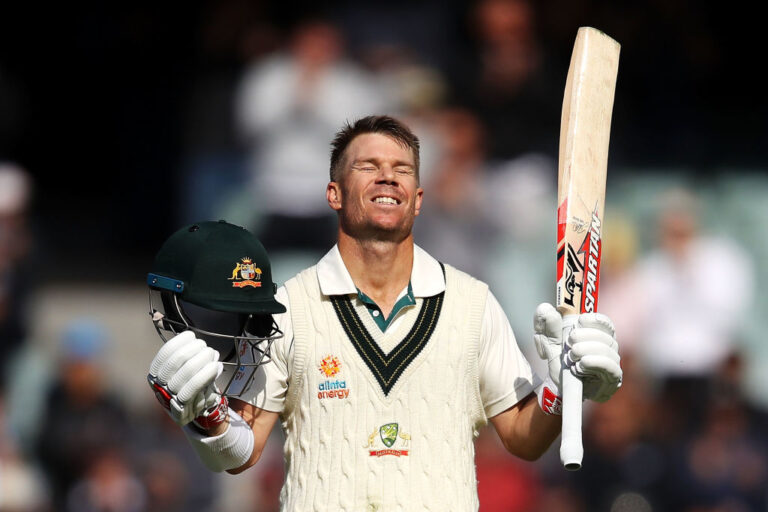Cricket, recognized for its sportsmanship and fair play, encounters occasional controversial incidents that ignite debates and discussions. One particular occurrence that consistently captivates attention is the infrequent and disputed act known as “Obstructing the Field.” In this blog, we explore the intricacies of this cricketing rule, its historical context, and the events that have indelibly marked it in the cricketing vocabulary.
Understanding Obstructing the Field:
A batsman can be out for obstructing the field if they intentionally block or distract the fielding team through words or actions. Additionally, it is considered obstruction if, while the ball is in play, a batsman intentionally hits the ball with their bat or body (excluding a hand not holding the bat) without the fielder’s consent after the ball has been touched by a fielder. This rule applies regardless of whether or not it puts the fielding team at a disadvantage.
Either umpire has the authority to determine whether an obstruction or distraction is intentional. If there is any uncertainty, the umpire in question will seek input from the other umpire. Know more
Returning ball to fielder
Imagine you’re hitting the ball in cricket. It bounces near you after hitting the bat or even you! It might seem easy and friendly to just pick it up and hand it to the fielder. But be careful! The other team might accuse you of cheating by stopping the ball on purpose.
In the past, players used to ask permission before touching the ball, just to be safe. Even if they didn’t, most teams wouldn’t complain. But nowadays, things are different.
In professional cricket, teams are very serious about keeping the ball in good condition, which can help them win in sneaky ways. So, if you offer to touch the ball, they might say no! Luckily, no major fights have happened over this yet in big games.
So, to remember: picking up the ball might seem harmless, but ask yourself if it’s worth the risk of upsetting the other team. Stick to hitting and running, and let the fielders do their job!
History of Obstructing the Field:
The origins of the obstructing the field rule can be traced to cricket’s early days. The rule was formulated to deter batsmen from purposefully impeding the fielding side’s efforts to secure a wicket. While the objective of the rule is evident, its implementation has been a source of contention and subjective interpretation throughout the years.
List of batters dismissed for obstructing the field in international cricket
| Date | Batsman | Match | Format |
| 20 November 1987 | Rameez Raja | Pakistan vs England | Test |
| 22 October 1989 | Mohinder Amarnath | India vs Pakistan | ODI |
| 6 February 2006 | Inzamam-ul-Haq | Pakistan vs England | Test |
| 21 March 2013 | Mohammad Hafeez | Pakistan vs South Africa | ODI |
| 27 November 2013 | Anwar Ali | Pakistan vs South Africa | ODI |
| 3 September 2015 | Ben Stokes | England vs Australia | ODI |
| 23 June 2017 | JJ Roy | England vs South Africa | T20 |
| 10 March 2021 | MD Gunathilaka | SriLanka vs West Indies | ODI |
| 6 December 2023 | Mushfiqur Rahim | Bangladesh vs New Zeland | Test |
Famous Examples:
- Mohinder Amarnath (India vs. Sri Lanka, 1986): Among the earliest occurrences, Mohinder Amarnath faced being declared out for handling the ball to impede Sri Lankan fielders. This decision sparked debates, questioning the legitimacy of such dismissals.
- Inzamam-ul-Haq (Pakistan vs. India, 2006): In a match against India, Inzamam-ul-Haq found himself out obstructing the field as he used his bat to stop a throw, attempting to avoid being run out. The decision triggered controversy, with differing opinions on whether it was a deliberate act of obstruction.
- Ben Stokes (England vs. Australia, 2015): In a peculiar incident, Ben Stokes was given out obstructing the field during an ODI against Australia. Following being bowled, Stokes extended his hand to prevent the ball from hitting the stumps. The decision prompted widespread discussions regarding the spirit of the game.
- Mushfiqur Rahim (Bangladesh vs. New Zealand, 2023): During the 41st over in the second Test against New Zealand at the Sher-E-Bangla National Cricket Stadium in Mirpur, the batsman defended a delivery from Kyle Jamieson into the ground. Subsequently, he swatted the ball away with his right hand after it had bounced up wide outside the off-stump. After that New Zealand promptly appealed and he was declared out for obstructing the field, TV umpire upheld the decision.
Obstructing the field stands out as an infrequent and debated rule in cricket, introducing a layer of suspense and unpredictability to the game. As fervent followers of the sport, we anticipate that this rule will persist as a subject of discourse and disagreement. It serves as a reminder that within a sport guided by rules and traditions, there remains space for interpretation and controversy.
Summing up
In the heat of a cricket match, emotions run high. But sometimes, that passion can spill over into a less sportsmanlike area: obstructing the field. This rare dismissal happens when a batsman, in a desperate attempt to gain an advantage, uses their body (or anything else!) to stop the ball or hinder the fielding team. Think kicks, shoves, even cheeky bat flicks – all considered no-gos. It’s like throwing sand in the other team’s eyes, except with a cricket ball. Why is it bad? Well, imagine a fielder sprinting in for a crucial catch, only to be tripped by the batsman’s flailing elbow. Not cool, right? Obstructing the field is against the spirit of the game, a way of saying, “I can’t win fairly, so I’ll bend the rules.” And when that happens, the magic of cricket – the fair play, the nail-biting tension – evaporates. So, next time you’re out there on the pitch, remember: keep your cool, play hard, and leave the ball-blocking shenanigans to the playground bullies. The game (and your sportsmanship) will thank you for it.
FAQs
If batter obstruct the field on a No ball then batter who did that will be given out for obstructing the field.
In cricket, after hitting the ball, batters can’t touch it with their hands or body on purpose, like scooping it up or pushing it away. Why? Because that’s unfair to the fielders trying to get them out!
But there are exceptions.
If the ball comes at a batter like a rocket and they raise their hand to protect themselves, that’s okay. And if the ball accidentally bumps into their clothes or bat, no problem. It’s only when they use their hands or body on purpose to interfere with the ball that they can be called out.
The main idea is that batters should let the ball alone and let the game play out naturally. So remember, keep those hands at your sides and let your bat do the talking!
Yes, batter can hit the ball twice if ball is going to hit stumps but only with bat not hands.




